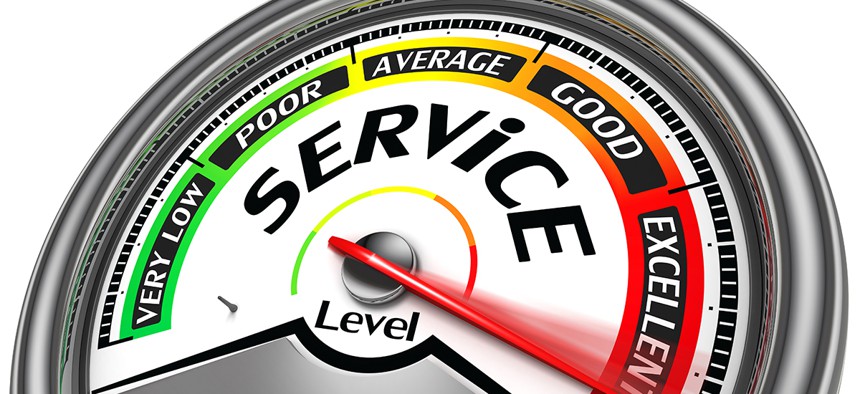What Will OMB's New Requirements Do for Federal Customer Service?

donskarpo/Shutterstock.com
The 2016 directive is a strong signal from the House appropriations committee that the government’s efforts to improve customer service following an executive order in 2011 have not gone far enough.
This week at Government Executive, John Kamensky highlighted a directive in the 2016 consolidated appropriations bill directing the Office of Management and Budget “to report on agencies’ progress in developing customer service standards and incorporating them into their performance plans.”
The directive is a strong signal from the House appropriations committee that the government’s efforts to improve customer service following an executive order in 2011 have not gone far enough.
Bad news stories in federal customer experience are a dime a dozen. The Internal Revenue Service’s inability to answer taxpayers’ calls last tax season is just one of many examples where federal customer experience falls short of what customers tend to experience when they order from Amazon or book a trip to Disney World.
Is this requirement a fix-all for the government’s customer experience woes?
Probably not, but like many big ideas forged in federal bureaucracy, it’s a start.
Rick Parrish, a senior analyst at Forrester Research, said he was “very happy to see Congress take an interest” in federal customer experience, but tempered his optimism.
Many agencies, he said, saw President Barack Obama’s executive order in 2011 “as a box-checking exercise” and said many plans to improve agency programs were built more on fantasy than reality. He fears more of the same.
“I see this primarily as another box-checking exercise,” Parrish told Nextgov. “OMB already publishes a quarterly report that has good information on OMB’s general progress managing the customer service (cross-agency priority) goal. Adding a requirement that OMB also report on individual agency programs is certainly going to surface some information, but it’s not necessarily going to get agencies doing more than they were going to do.”
Just as agencies varied in their efforts to comply with the Executive Order 13571– “some were dedicated to it, and some less,” Parrish said – so too will they comply with more OMB requirements to fulfill.
“I welcome it, but a lot of it will probably sound better than it ends up being,” Parrish said. “Implementation is usually where the failure usually happens.”
Martha Dorris, who formerly served as one of the government’s customer experience champions within the General Services Administration, said measuring standards within agencies “in isolation” would have “some impact. She, however, questioned how much it could have given how different customer service standards are across the federal government.
Whereas the IRS might measure customer service based on call center response rates, an agency like the Export-Import Bank measures it completely differently. (For the record, the Export-Import Bank has one of the most advanced customer service efforts in the federal government. It has established customer service standards built around transaction processing times, and reports that information publicly).
Further, Dorris said measuring standards without addressing other underlying issues, like a lack of core competency in customer service or customer experience for the Senior Executive Service, can only move the bar so much.
Yet, increased focus on customer service from OMB and Congress should bode well for government agencies as the final year of the Obama administration comes to an end. Obama’s policies have invigorated customer experience professionals in government – he used his final appearance on “The Daily Show” to tout it – but momentum could wane as the presidential transition begins.
“I do think from the top level, it’s critical we have some money and focus on CX in the next administration or we’re going to lose momentum on the work we started,” said Dorris, who launched a customer experience consulting company called Dorris Consulting International. “OMB should be monitoring CX standards and that is a step in the right direction. But I don’t think there is a one-size-fits-all for standards.”
Rather, she said, standards ought to be derived “program-by-program” based on “what drives satisfaction from their customers” and have those standards “monitored over time.”
(Image via donskarpo/Shutterstock.com)






